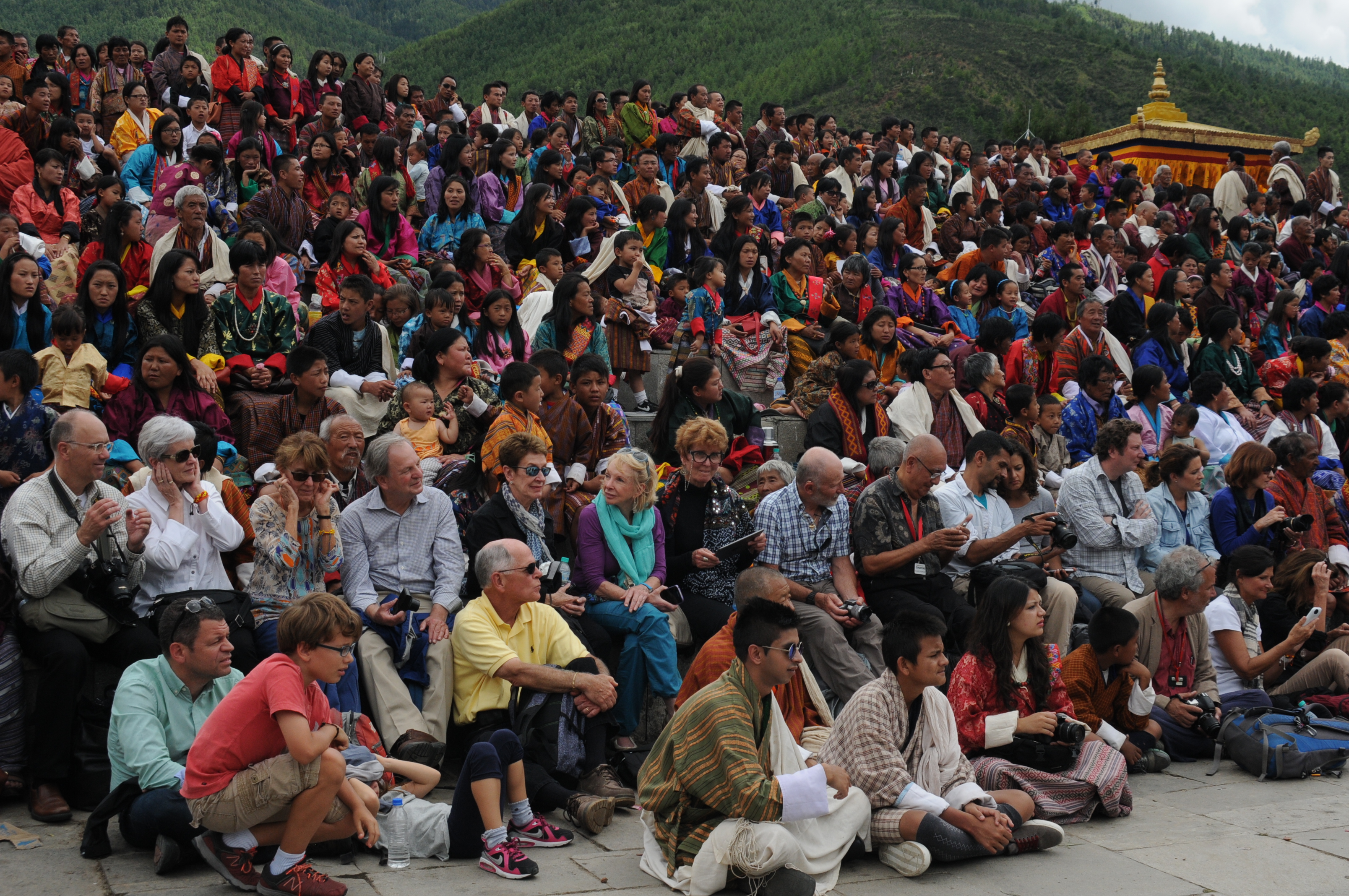THIMPHU — In 2017 alone, Bhutan saw arrivals of 255,000 tourists, which is more than a 100 percent increase in just five years.
People’s Democratic Party (PDP) in 2013 pledged that the annual tourist arrivals would be increased to 200,000 in the period of five years.
The party identified tourism as one of the five jewels in the 11th Plan and Prime Minister Tshering Tobgay in his State of the Nation Report 2018 said that tourism had expanded rapidly.
In 2013, there were arrivals of around 116,000 tourists. “Last year alone, we saw arrivals of around 255,000 tourists which is more than a 100 percent increase in just five years,” he said.
This pledge is fulfilled. Of the total arrivals last year, about 72,000 were international tourists and 183,000 were regional tourists.
The government also pledged that the revenue from the tourism sector would be doubled which would be facilitated by a combination of tariff revision, aggressive marketing and reduction of royalty.
The prime minister said the growth in tourism brought in additional revenues of Nu 8.4B (US$ 123.529M) last year compared to Nu 5.5B (US$ 80.882M) in 2013.
The government reduced the royalty by endorsing Tourism Levy Exemption Bill despite the National Council’s resolution that government scrap the Bill. The Opposition was also against royalty waiver.
Tourism Levy Exemption Bill 2017 waived off royalty of US$ 65 a day per tourist visiting the six eastern districts. The royalty, now known as sustainable development fee (SDF), is levied in addition to the minimum daily tariff of US$ 200 during lean season and US$ 250 during the peak season. The exemption of royalty, which came into effect from November 16, 2017, will be implemented for three years.
The 11th Plan report states that the tourism sector remains the highest foreign currency-earning sector. Royalty contribution from international tourist increased from Nu 902.38M (US$ 13.270M) in 2013 to Nu 1,372.31M (US$ 20.181M) in 2017.
A total of USD 79.8M gross earnings and US$ 22.4M SDF were earned from the international arrivals last year, according to Bhutan Tourism Monitor 2017.
People’s Democratic Party’s manifesto states that it would streamline tourism in the country by adopting the Bhutan Tourism Bill. This pledge, however, has not been fulfilled.
The 16th session of NC that concluded in December 2015 called on the government to immediately adopt a tourism policy and to table a tourism Bill in Parliament.
Former NC member from Gasa, Sangay Khandu, during the national council session in May last year, asked the prime minister why the government failed to implement those recommendations.
The Prime Minister said Bhutan already has adequate policies and guidelines in place to regulate the tourism sector and does not need a tourism Act urgently.
However, he acknowledged the need to adopt a tourism policy to not only regulate the growing numbers of regional tourists, but also to promote domestic tourism. He informed the house that the Cabinet endorsed a draft tourism policy in February last year.
Tourism council has submitted an action plan for the drafting of the policy.
According to NC, the benefits of tourism were not spread evenly across the country and that tourism activities were mostly concentrated in the west. Poor quality road, lack of roadside amenities and long travel distances were some of the reasons cited.
The PDP had also pledged that it would ensure that at least 20 percent of tourists visited east for uniform distribution of benefits from the sector. It said the government would diversify tourism products to ensure balanced regional growth.
However, according to Bhutan Tourism Monitors, only about three percent of international arrivals visited five of the six eastern districts last year.
In 2016, about two percent of the total arrivals visited the eastern districts. About five percent each of the total arrivals visited the eastern districts in 2014 and 2015.
In an earlier interview with Kuensel in December 2016, former opposition MP Dorji Wangdi said the delay in the ongoing widening works on the East-West highway and the suspension of Yonphula airport affected tourism in the east.
Of the three domestic airports in the country, Yonphula domestic airport in Trashigang had recorded the highest number of flight cancellations due to unfavourable weather conditions.
A total of 18 flights to Yonphula have been cancelled owing to bad weather conditions since Drukair resumed its domestic flights to Trashigang and Gelephu on November 11, 2017 to May 15. The airline operated 53 successful flights.
While the government also pledged that it would introduce new tourism products to deliver income and employment opportunities through community participation, the prime minister said the industry has also created many jobs leading to a number of tour operators increasing to 3,100 from 1,100 in 2012.
The number of tour guides increased to 4,000 from 1,900 in 2012 and the number of hotels increased to 1,400 from 900 in 2012, the State of the Nation report states.
Employment in the tourism sector increased from 20,372 in 2013 to 29,827 in 2017, according to the 11th Plan final report.
PDP’s manifesto also states that it would develop District Tourism Development Plans, new tourist destinations would be identified, and promote Bhutan as a MICE (meetings, incentives, conferences and events) tourism destinations.
Haa will likely be the first district to have its own tourism action plan should the district assembly endorse the tourism action plan (2018 -2023).
In an effort to promote MICE during summer and winter months, there is a provision in the Tourism Rules and Regulations 2017 where participants in a group of a minimum of 30 people visiting for meeting and conference purposes are exempted from paying the SDF for additional two days besides the actual duration of conference and meeting.
